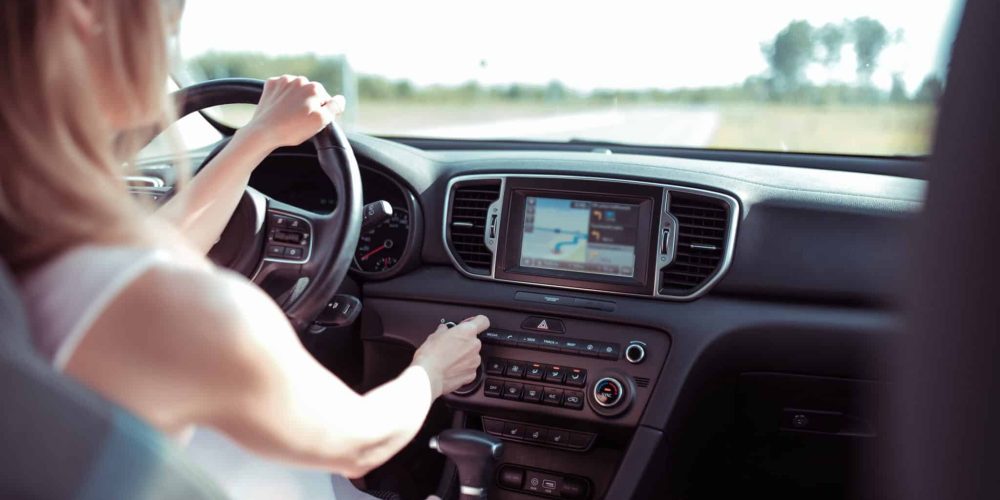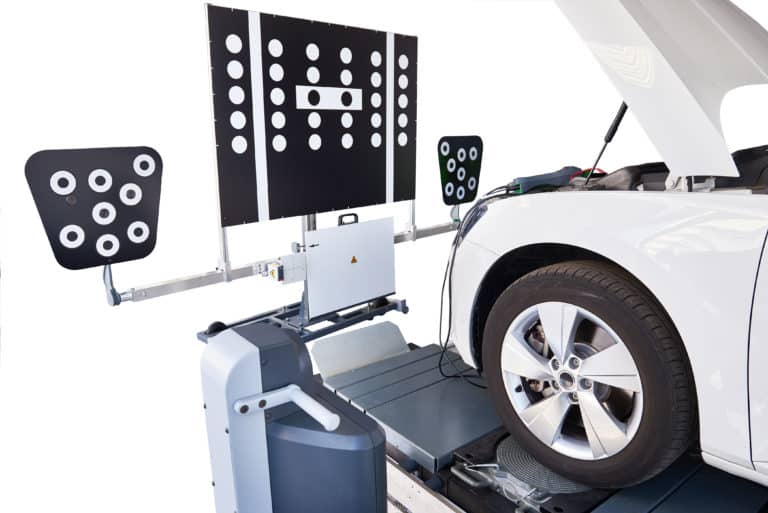As our cars continue to evolve, new technology is being developed to make roads safer and reduce the risk of accidents. One of these advancements is the use of driver monitoring systems. These systems constantly monitor the driver’s alertness, watching for signs of distraction or fatigue and giving timely alerts to prevent accidents. With the rise of autonomous vehicles, DMS technology is needed now more than ever before. In this article, we’ll explain what these systems are, how they work, and their importance in the world of ADAS.
What is a Driver Monitoring System?
A driver monitoring system (DMS) is a relatively new technology designed to make our roads safer by closely monitoring the driver’s behavior and state. DMS utilizes a combination of state-of-the-art sensors, high-resolution cameras, and artificial intelligence algorithms to assess whether the driver is alert, attentive, and capable of safely operating the vehicle.
These systems are specifically engineered to detect early signs of drowsiness, distraction, or impairment that could potentially lead to dangerous driving situations. At the heart of a DMS lies facial recognition software, which continuously scans the driver’s face and eyes, analyzing various indicators. These indicators include the frequency and duration of eye closure, head position, and even micro-expressions that may indicate fatigue or lack of attention. Some advanced DMS solutions can even track additional physiological parameters, such as heart and blink rates, to provide a comprehensive analysis.
The real-time data collected by the DMS is analyzed, and if any risk factors are detected, the system promptly alerts the driver through visual, auditory, or haptic feedback. This proactive approach helps prevent accidents caused by factors such as fatigue or inattention, ensuring the safety of both the driver and other road users.
By providing an extra layer of safety and assistance, DMS technology significantly reduces the risks associated with inattentive drivers. With its ability to continuously monitor the driver’s condition and intervene when necessary, DMS serves as a reliable co-pilot, contributing to a more secure driving experience.
How do Driver Monitoring Systems Increase Driver Safety?
Driver monitoring systems significantly contribute to road safety. According to the National Highway Traffic Safety Administration (NHTSA), drowsy driving alone is responsible for 72,000 crashes, 44,000 injuries, and over 800 deaths annually in the United States. With DMS technology monitoring driver alertness and intervening when necessary, these numbers can decrease.
Real-world examples highlight the effectiveness of these systems. In some cases, DMS has alerted drivers who were losing focus, avoiding potential accidents. Another common application is the system’s ability to detect distractions, such as using a mobile phone or looking away from the road. The system then alerts the driver to refocus their attention on driving. By providing these warnings, DMS supports drivers in maintaining appropriate driving behavior, enhancing road safety.
A driver monitoring system can alert the driver in various ways. One common method is auditory alerts, where the system emits a distinct sound, such as a beep or a series of tones, to signal the driver. This is typically used for immediate notifications, like drifting out of a lane or impending collision.
Visual alerts are another common method used by Driver Monitoring Systems (DMS), often for less immediate issues. An icon or message may flash on the vehicle’s dashboard or heads-up display, indicating the nature of the concern monitored by the system.
Some advanced Driver Monitoring Systems also use haptic feedback, such as seat or steering wheel vibrations, to alert the driver. This approach can be effective if the driver is visually impaired or if visual and auditory alerts provided by the Driver Monitoring System are not noticed.
In more severe situations, the Driver Monitoring System might take active control of the vehicle, such as slowing the car down or steering it to the side of the road, ensuring the safety of the driver and passengers.
In addition to preventing accidents caused by external factors, driver monitoring systems also aid in mitigating risks posed by medical emergencies. For instance, if a driver experiences a sudden health issue while driving, DMS can detect the changes in their driving behavior and alert them to pull over or contact emergency services.
With technological advancements, DMS is continuously evolving to improve its capabilities and enhance road safety further. Some developments include incorporating artificial intelligence for more accurate detection of drowsiness or distractions, as well as integrating with other safety systems such as automatic emergency braking and lane departure warning. These advancements not only improve the effectiveness of DMS but also make it more user-friendly and seamless for drivers to use.
Autonomous Driving and Driver Monitoring Systems
Driver monitoring systems are a major component in the evolution of autonomous driving, especially for achieving Level 3 and Level 4 autonomy. At these levels, vehicles are capable of handling most driving tasks, but human intervention is still required under specific conditions. DMS plays a pivotal role here by ensuring the driver is ready to take control when necessary.
In Level 3 autonomy, where the car handles the majority of driving tasks, the DMS continuously monitors the driver’s state to ensure they can take over control promptly if the system encounters a scenario it cannot handle. For Level 4 autonomy, which allows for completely autonomous driving in certain conditions, the importance of DMS increases. Even though these vehicles can operate independently in designated areas, the transition periods where human drivers need to regain control are critical. DMS ensures that the driver is alert and aware during these transitions, ready to take control when needed.
Additionally, DMS can also assist in creating a personalized driving experience for each individual. By monitoring their behavior and preferences, the system can make adjustments to settings such as seat position or climate control to improve overall comfort and safety.
As the race towards fully autonomous vehicles continues, driver monitoring systems will only become more sophisticated and advanced. The technology is always evolving, incorporating features such as facial recognition, eye tracking, and even biometric measurements to accurately assess the driver’s state. By integrating DMS into autonomous vehicles, manufacturers are addressing a large challenge of automated driving: ensuring that human drivers remain ready and prepared to take over whenever needed.
Understand When Vehicles Need Calibration
Driver monitoring systems reduce crashes and injuries by providing alerts to drivers. But, they can’t prevent every collision. When a crash happens — even one that doesn’t directly impact the sensors in the system — the cameras and sensors still need to be professionally recalibrated so they are accurately monitoring the driver and functioning properly. Driver monitoring system calibration is just one part of any ADAS calibration service. Knowing when to calibrate ADAS cameras and sensors is key to keeping your ADAS systems working the right way. So, in the event you experience even a small collision, it’s crucial to bring your vehicle to a professional ADAS calibration center to be sure that your ADAS systems are still intact.
Learn More About Driver Monitoring Systems or Start Your Own ADAS Calibration Center
Driver monitoring systems play a large role in the advancement of vehicle safety and the progression toward autonomous driving. As they integrate into the complete ADAS suite, they offer a safety net, reducing the risk of accidents due to distraction or fatigue. If you’re interested in working more with ADAS, our ADAS calibration center solution provides both site certification and training for your team. Learn more about establishing your ADAS calibration center today.
Driver Monitoring Systems FAQs
What is the primary function of driver monitoring systems?
Driver monitoring systems enhance safety by assessing the driver’s attention and alertness levels. Using cameras and sensors, they monitor eye movements, head position, and facial expressions to detect drowsiness or distraction, alerting the driver when necessary.
How do driver monitoring systems integrate with other ADAS features?
Driver monitoring systems work with other ADAS features, like lane-keeping assist and adaptive cruise control, to enhance safety. If the driver is inattentive, the system can activate these features to maintain the vehicle’s position and speed.
Are driver monitoring systems effective in preventing accidents caused by drowsy or distracted driving?
Yes, driver monitoring systems effectively reduce accidents caused by drowsy or distracted driving by providing real-time alerts and interventions, helping drivers stay focused and attentive.







